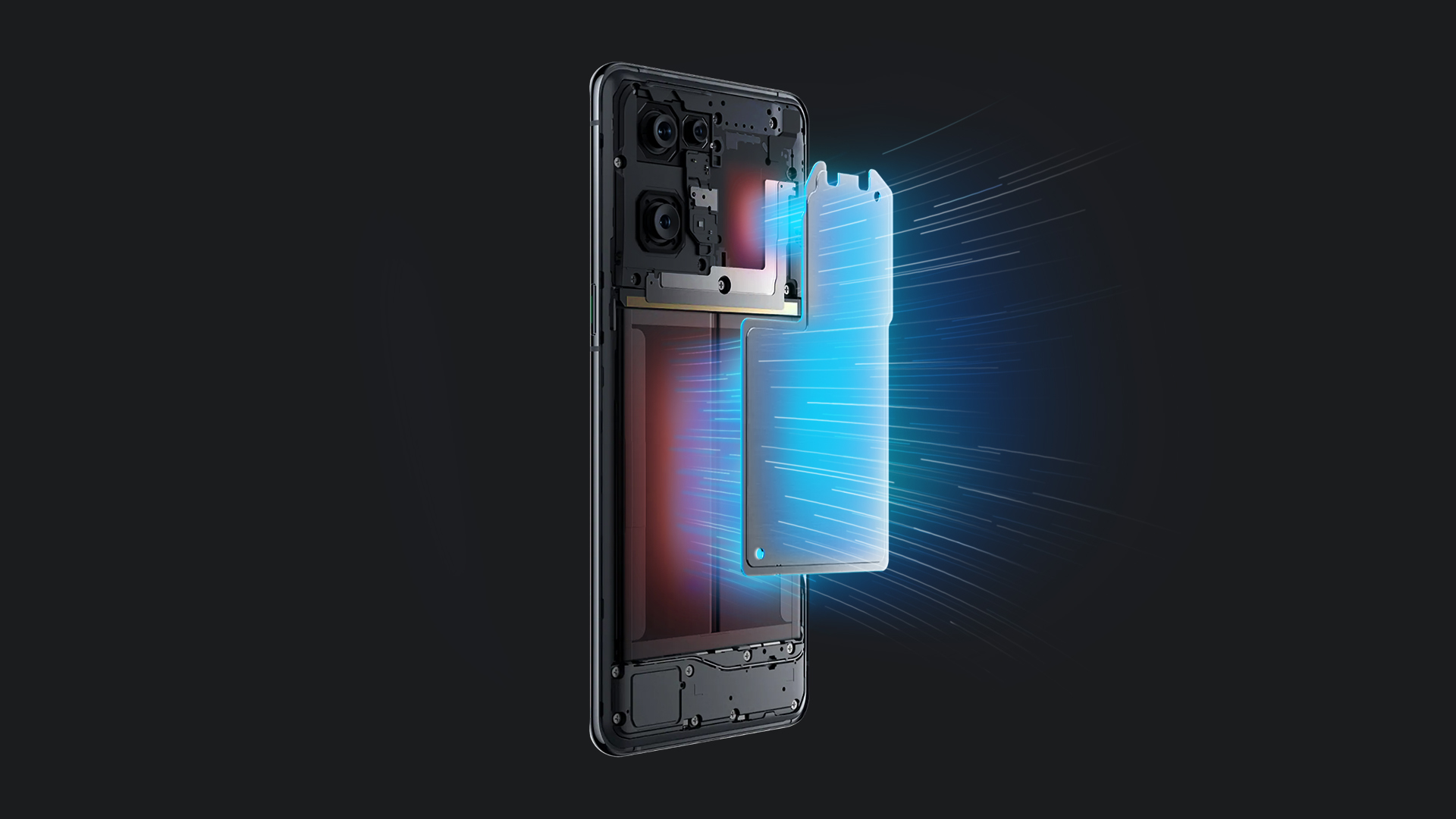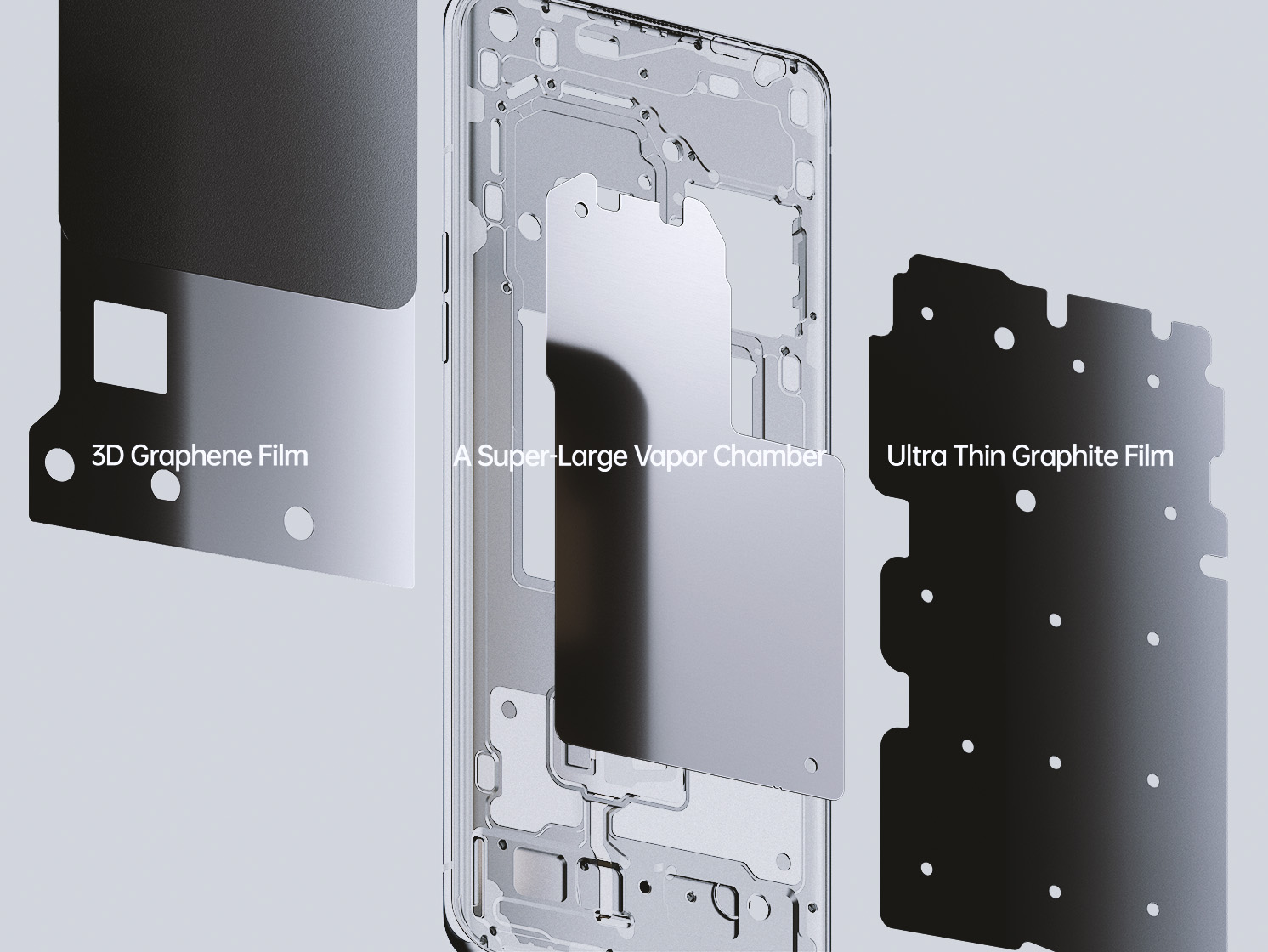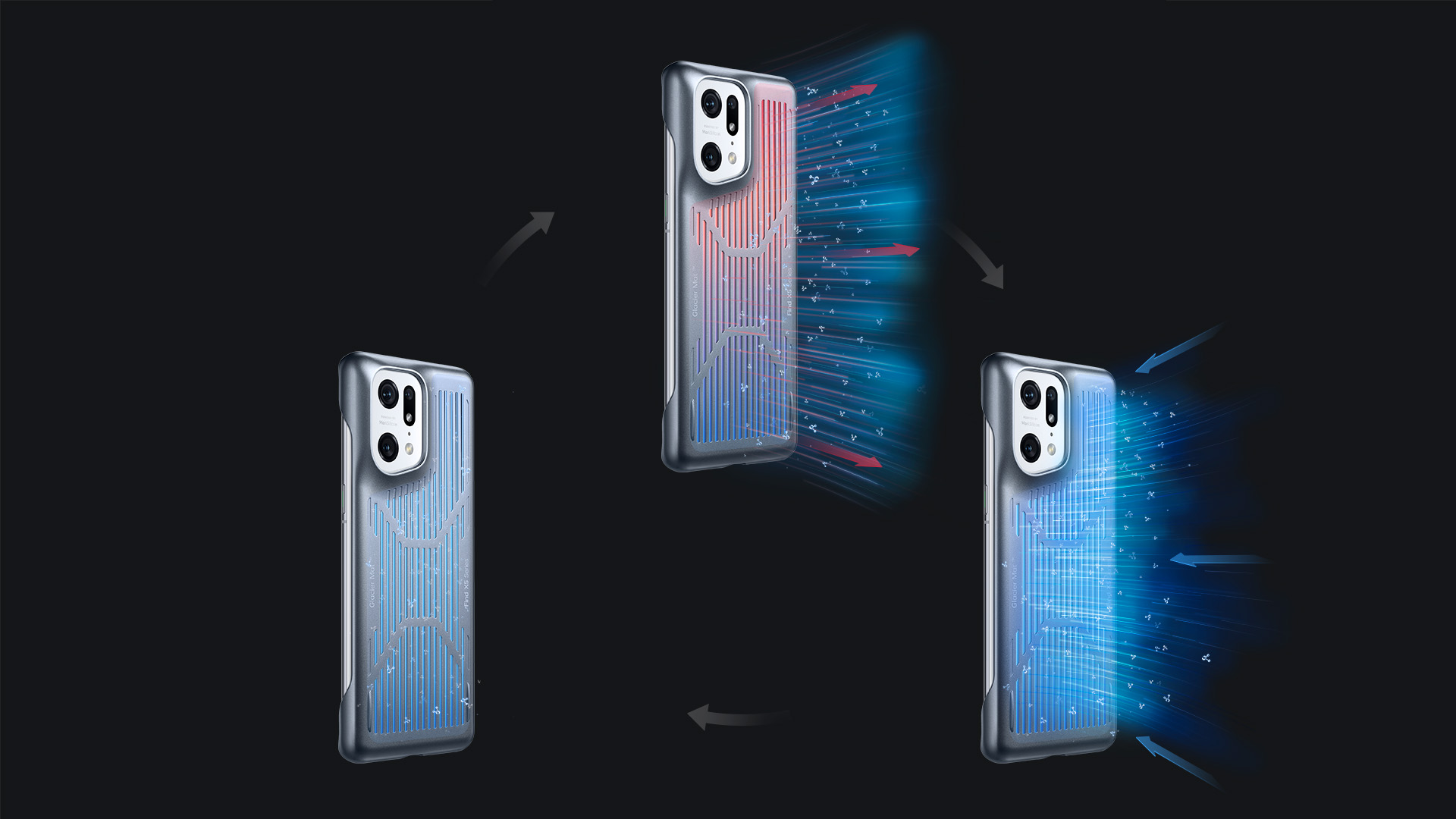
PC-grade cooling in a miniature shell
Perfecting cooling in a phone is not a simple process. The OPPO Find X5 Pro uses a full passive cooling solution, generating zero noise. And all its pieces have to slot in around the core components in a precision-crafted case less than 9mm thick.
The OPPO Find X5 Pro cooling system is not treated as a pure logistical block puzzle. Each step of the process is guided by the human body’s perception of temperature. There will be no hot spot on the phone’s back that the users can notice, no heat build-up to distract from whatever situations
OPPO vapor chamber design
A vapor chamber is the heart of the phone’s cooling system. From the outside, this may simply look like a thin sheet of metal, but there’s an intricate little world inside its walls.
The vapor chamber is an ultra-thin copper cave injected with a very small amount of liquid. As heat from the components underneath conducts through the chamber’s bottom, this liquid evaporates and spreads throughout the chamber. It condenses on the outer walls, spreading the heat it held over a much larger surface area, dissipating the heat in the process.
The larger a vapor chamber is, the wider and more effectively it can move heat away from the components that generate it, like the primary processor. OPPO has managed to increase its size by 75% over the previous generation. It almost completely covers the battery and SoC, the main processor.
The display driver and display panel, the SoC and wireless charging coil are some of the heat-generating areas that require extra attention. OPPO developed bespoke solutions for these components based around three materials: copper, graphite and graphene.
Advanced materials engineering
Copper is the traditional material for cooling components. However, when devising heat management for the display, OPPO’s R&D team found that both heat dispersal and the resilience of the screen can be improved by using a copper sheet sandwiched with an ultra-thin layer of graphite.
It helps to keep the display cool while it delivers searing brightness at 120Hz, and dramatically improves the drop resilience of the OPPO Find X5 Pro by increasing structural integrity.
The other hot zones in a phone, like the motherboard and battery coil, did not need the same level of structural support, letting OPPO R&D dig even further into possible solutions. They landed on a graphene film, where the carbon from graphite is arranged in a single-atom layer, which dramatically improves strength and conductivity.
Graphene is a wonderful material but producing it on a mass scale is no easy task. To turn graphite into graphene involves a process called sintering, where the graphite is heated at temperatures up to 3100 degrees centigrade. Such high temperatures were unattainable for mass industrial production. OPPO is the first in the industry to achieve it, resulting in the highest quality, most conductive graphene film.
Following years of experimentation and fine-tuning, OPPO has achieved a 50% improvement in thermal conductivity of the graphene film compared to its first-generation process, for industry-leading performance.

More than passive cooling
OPPO also created the new Ice-skin* case to keep the phone cool while protecting it. The core of the case is Glacier Mat, an innovative material that achieves a self-replenishing cooling cycle without using any power at all.
Glacier Mat is a hydrogel layer co-developed with Wuhan University, one of the top universities in China. Hydrogel pulls moisture from the air, which is then evaporated through the heat generated by the device. It is an ideal material to bring the heat out from the device. However, the ordinary hydrogel cannot replenish water after evaporation so it can’t be used as a long-term cooling solution.
Glacier Mat is different, it is a modified hydrogel that can re-absorb moisture from the air at low temperatures, after the water initially held is evaporated through the process of cooling the OPPO Find X5 Pro, creating a circular cooling cycle. Although it sounds simple, it cost OPPO’s engineers a great deal of effort to put this theory into practice and mass production in less than half a year.

Testing shows a 2-3 degree drop in phone temperature when gaming with the Ice-skin case attached. A cooler phone improves comfort during play and ensures the highest frame rates for smoother experience. The most important part: the Ice-skin case achieves all this with minimal weight, zero power use and zero noise.
#OPPO






